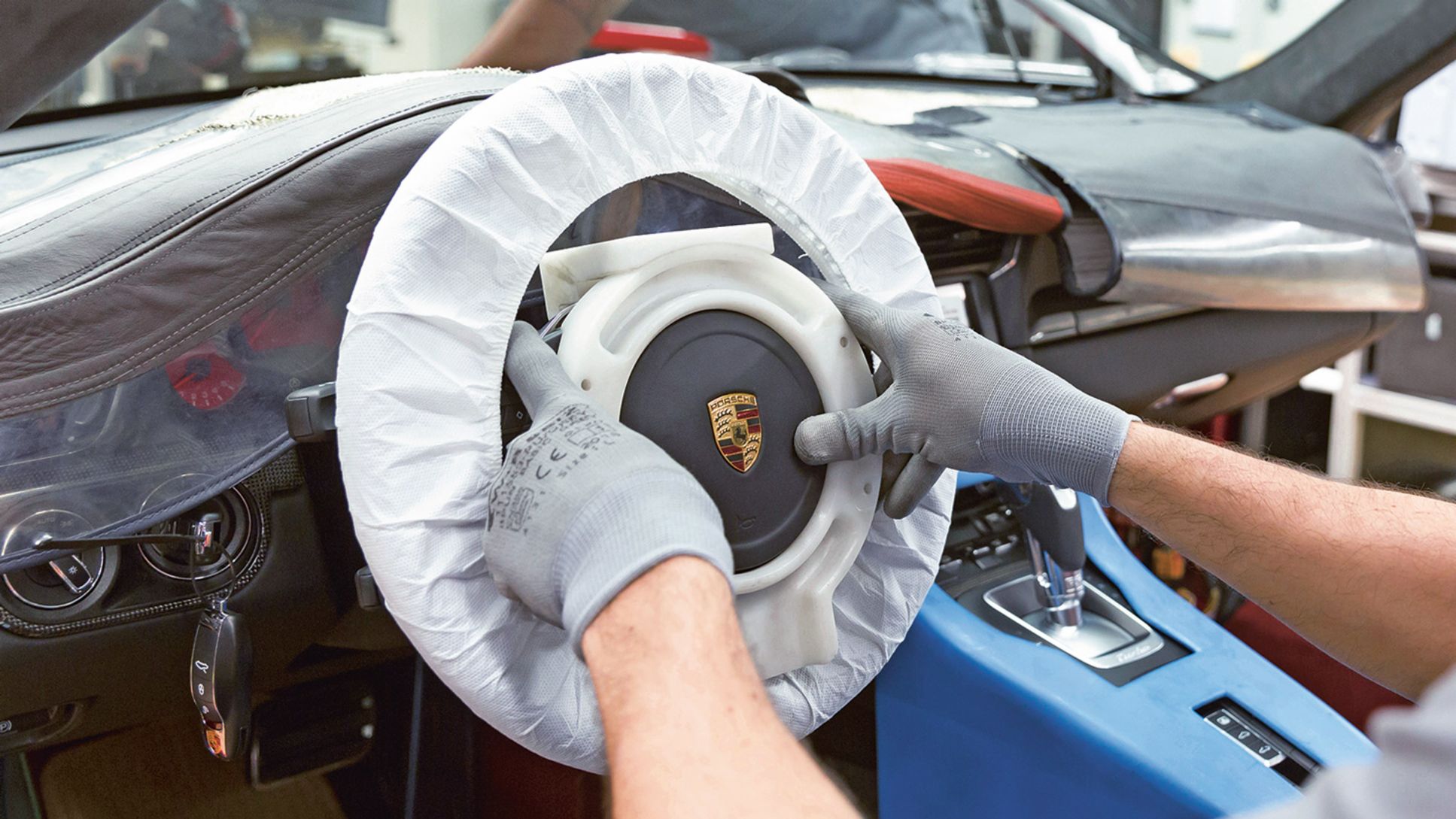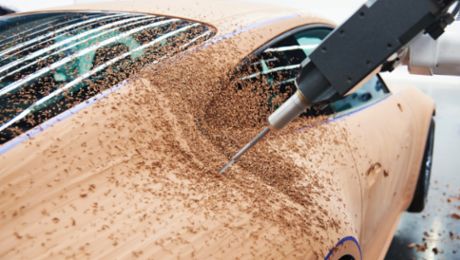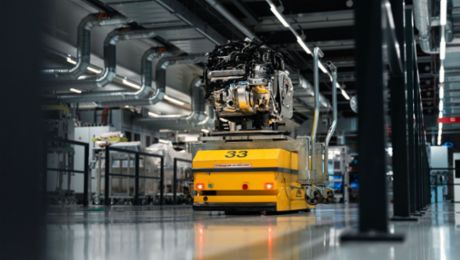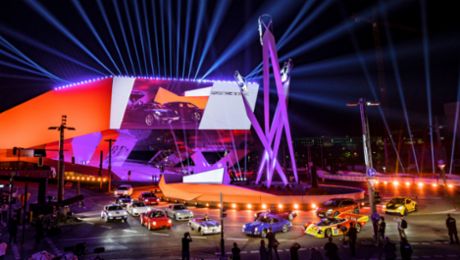Porsche uses a system of audits to verify quality during and after production. "We review product quality along the entire process chain, from coachbuilding, paint shop and assembly through to the finished car," explained Michael Rometsch, Head of Product Auditing at the Zuffenhausen plant. All this supplies management with indicators of the quality of the delivered products.
A random sample of one per cent of the sports cars produced every year is subject to the car audit. Numerous parameters are checked during a test lasting about seven hours – everything from road behaviour, functions, noises and seals through to surface finishes, damage, manufacturing defects and production faults.
A new quality and analysis centre for Zuffenhausen
Progress at the Zuffenhausen plant has also been achieved by the new quality and analysis centre in the basement of the former paint shop in the Zuffenhausen plant, which started operations in July 2014. The company invested around seven million euros to convert the building and purchase new measurement instruments. There, employees have about 3,000 square metres of space to carry out more detailed root cause analyses on various components. This enables early detection of potential for optimising quality, especially in the pilot production stage.
Besides six analysis workstations, experts have several stationary measuring machines and mobile measuring instruments at their disposal. The key modules of the quality and analysis centre are the meisterbock ("master gauge") and cubing tests. The meisterbock is used to verify the outer sheet metal parts, while in cubing a car body milled from solid aluminium is employed as the reference for all body parts during the SOP. Experts additionally assess issues arising from the cubing and meisterbock tests under the aspects of auditing. "The centre, the highly qualified employees and the new instruments provide us with excellent equipment for upcoming projects and allow us to comply even better with our standards of quality, which are already extremely high," said Plant Manager Reiß.
Ergonomic design of production workstations
The downward curve of the sick-day rate at the Zuffenhausen main plant is generally pleasing and also boosts productivity. A rotation system and ergonomic design of production workstations contribute to this result. "Ergonomic working conditions sustainably promote health, performance and motivation in each employee. At the same time, they have a positive impact on quality," said Dr Roberto Hernández, Head of Planning at the Zuffenhausen plant.
Things that should be avoided include overhead work, the lifting of heavy objects, blind assembly, long walking distances and fitting points that are difficult to access. A colour code system of red, yellow and green is used at Porsche to assess the ergonomics of production workstations. "The aim at Porsche is to only have green workstations in the company by the year 2018," said Hernández.
Processes at Porsche in Zuffenhausen are being continuously improved
At the beginning of 2014, a swivelling assembly seat was introduced in the car assembly line as part of a pilot project. It facilitates work on fitting points that are difficult to access inside the car by "hovering" the employee in. Arduous bending and stretching as well as tools placed in the interior are now a thing of the past. "Our new vehicle door preassembly marks another milestone in terms of ergonomics," emphasised Hernández. Employees in that section now complete all the necessary work steps in an ergonomic working position. Other factors such as good lighting conditions and height-adjustable workstations are also a source of perceptible improvements.
The processes at Porsche in Zuffenhausen are being continuously improved as part of the Strategy 2018. "Examples here include even closer integration of our suppliers and the streamlining of our internal processes," said Carsten Dickhoff. New technologies, upcoming products and construction projects such as the new coachbuilding shop will continue to present new challenges with respect to quality.



